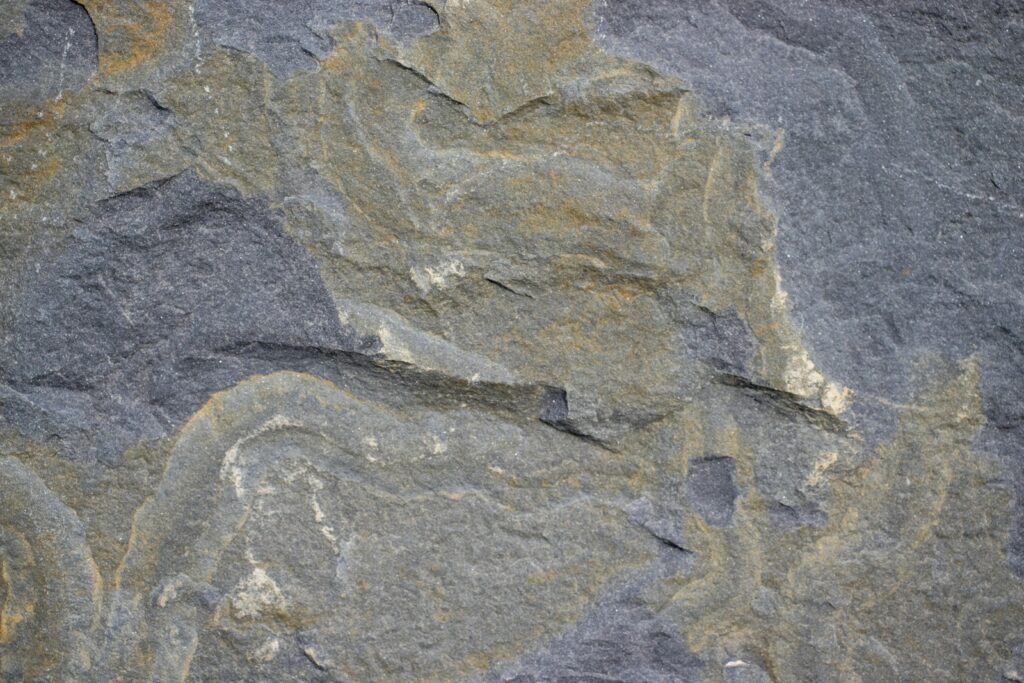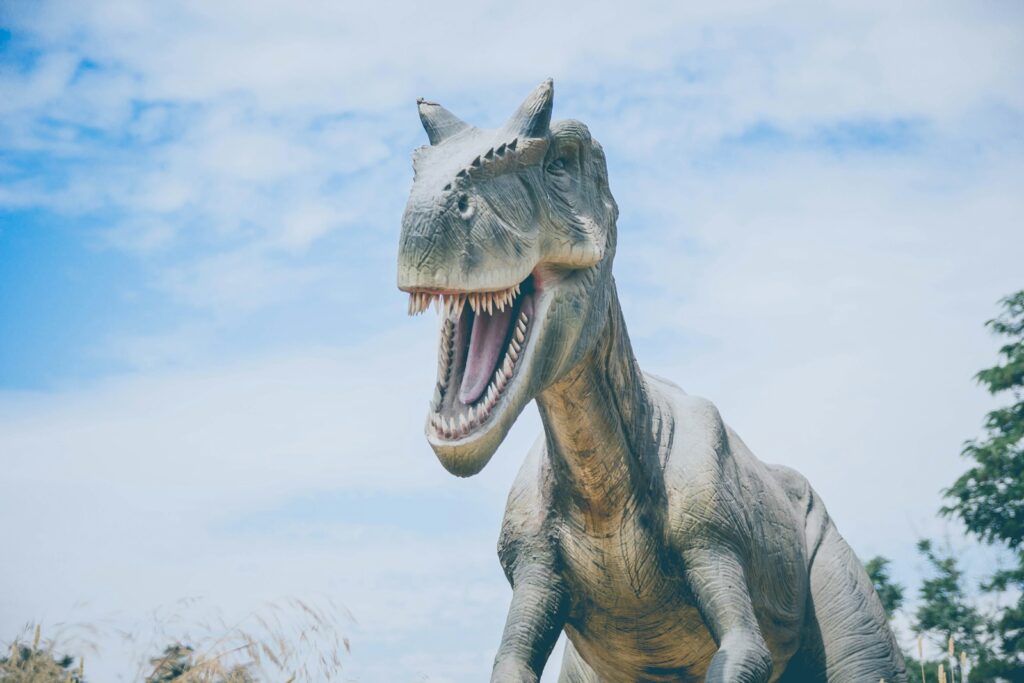In the vast pantheon of dinosaurs that once roamed our planet, few capture the imagination quite like Kosmoceratops richardsoni. This spectacular ceratopsian dinosaur, discovered in the rugged terrain of southern Utah, stands as a testament to the incredible diversity of prehistoric life. With its record-breaking 15 horns adorning an elaborate frill, Kosmoceratops wasn’t just another horned dinosaur—it was nature’s experiment in cranial ornamentation taken to magnificent extremes. Dating back approximately 76 million years to the Late Cretaceous period, this remarkable herbivore inhabited what was then a narrow, peninsula-like landmass known as Laramidia. Let’s explore the fascinating world of this uniquely adorned Utah native that has become one of paleontology’s most distinctive discoveries.
Discovery and Naming: The Birth of a Prehistoric Celebrity
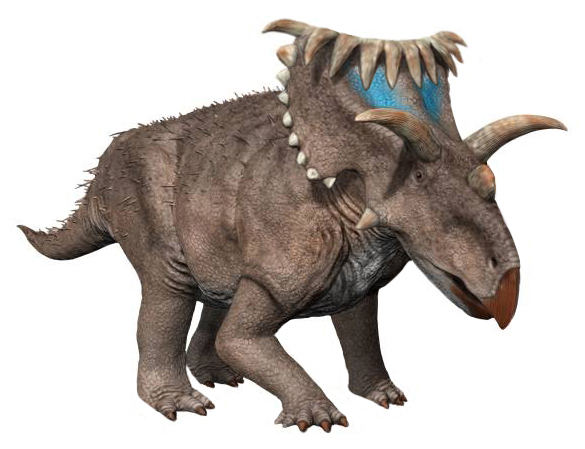
Kosmoceratops richardsoni was first discovered in Utah’s Grand Staircase-Escalante National Monument, specifically within the Kaiparowits Formation, in the early 2000s. The genus was formally named and described in 2010 by paleontologists Scott Sampson, Mark Loewen, and their colleagues from the Utah Museum of Natural History. The name “Kosmoceratops” derives from the Greek words “kosmos,” meaning “ornate” or “decorate,” and “cerato, p,s,” meaning “horned face,” a fitting description for this elaborately adorned dinosaur. The species name “richardsoni” honors Scott Richardson, a volunteer who discovered the first specimens during fieldwork expeditions in southern Utah. The holotype specimen consists of a nearly complete skull and partial skeletal elements, providing scientists with substantial material to understand this unique dinosaur’s anatomy and evolutionary significance.
Physical Characteristics: A Walking Horn Gallery

Kosmoceratops was a medium-sized ceratopsian dinosaur, measuring approximately 15 feet (4.5 meters) in length and standing about 5.5 feet (1.7 meters) tall at the hip. While its body plan resembled other ceratopsians like Triceratops, its cranial ornamentation set it dramatically apart from its relatives. Its most distinctive feature was its elaborate skull, which sported a record-setting 15 horns and horn-like structures distributed across its face and frill. These included a horn over each eye, one on the nose, ten hook-like projections around the margin of the frill, and two upward-projecting horns at the top of the frill. The frill itself was relatively short and wide compared to other ceratopsians, with a distinctive rectangular shape when viewed from above. Kosmoceratops likely weighed between 2.5 to 3 tons, with a robust body supported by four sturdy, column-like limbs typical of ceratopsian dinosaurs.
The Horned Crown: Analyzing the 15 Horns
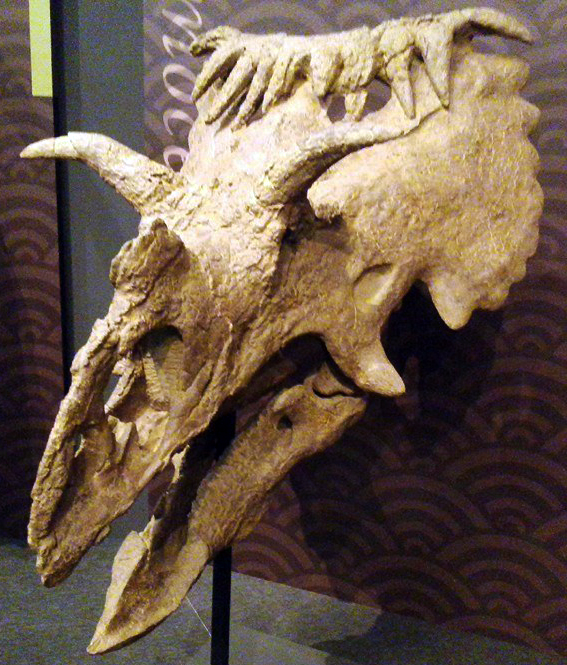
Kosmoceratops holds the distinction of possessing more horns than any other known dinosaur, with its 15 horns arranged in a spectacular display across its skull. Starting at the front, it featured a modest horn on its nose (the nasal horn) and a short horn above each eye (the supraorbital horns). The most dramatic elements were found on its frill, which displayed ten hook-like projections (epiparietals and episquamosals) along its margin that curved forward rather than projecting outward or backward as in many other ceratopsians. The frill was further adorned with two upward-projecting horns at its top edge and a final horn-like projection at the rear of the frill. Each of these horns varied in size and shape, creating an asymmetrical yet balanced arrangement that would have made Kosmoceratops unmistakable among its contemporaries. This elaborate horn configuration represents one of the most extreme examples of cranial ornamentation in the entire fossil record.
Habitat and Environment: Life in Ancient Utah
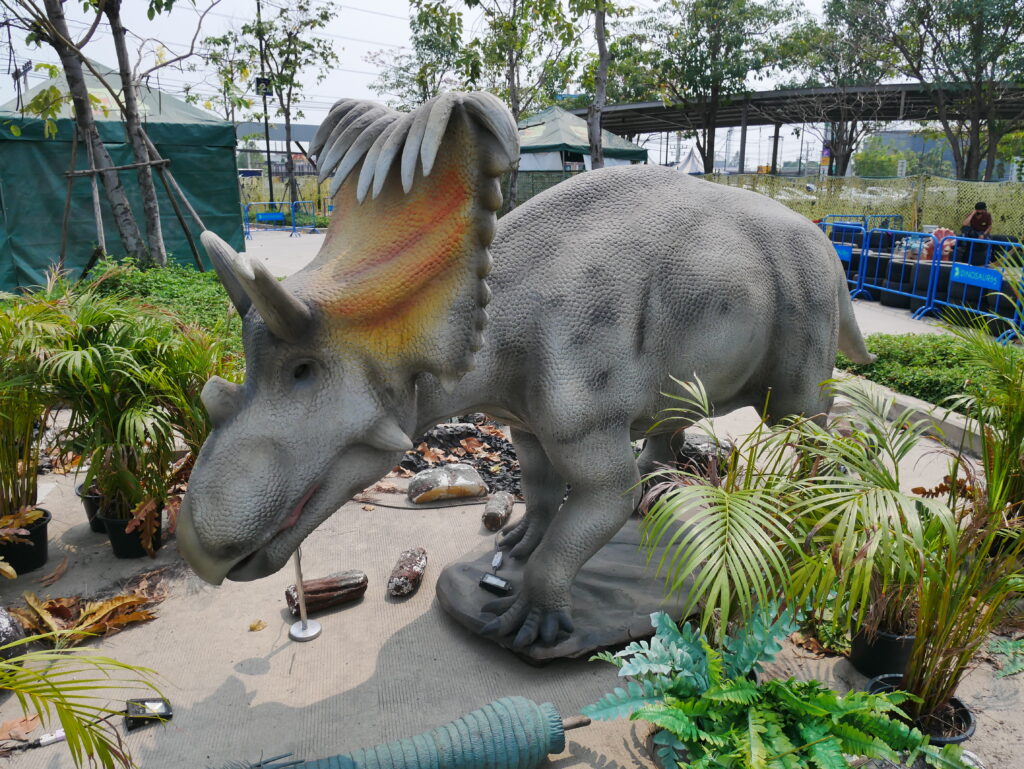
During the Late Cretaceous period, approximately 76 million years ago, the landscape of what would become Utah looked dramatically different from today’s arid terrain. Kosmoceratops inhabited a lush, subtropical coastal environment on the eastern shore of the Western Interior Seaway, an inland sea that split North America into two landmasses: Laramidia to the west and Appalachia to the east. The Kaiparowits Formation, where Kosmoceratops fossils were discovered, preserves evidence of a warm, humid environment with abundant rivers, swamps, and forests. This region supported a diverse ecosystem filled with conifers, ferns, flowering plants, and various prehistoric fauna. Paleoenvironmental studies suggest that Kosmoceratops lived in a seasonal climate with distinct wet and dry periods, navigating a complex mosaic of coastal plains and river deltas rich in vegetation that would have provided ample food for these large herbivores.
Dietary Habits: The Vegetarian Lifestyle
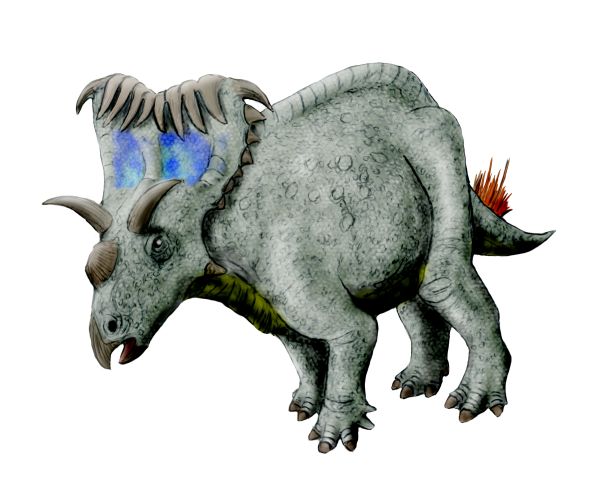
Like all ceratopsians, Kosmoceratops was an obligate herbivore with specialized adaptations for processing tough plant material. Its powerful beak-like structure at the front of its jaws would have been effective for cropping vegetation, while batteries of tightly packed teeth formed continuous cutting surfaces ideal for shearing through fibrous plant matter. Paleobotanical evidence from the Kaiparowits Formation suggests that Kosmoceratops likely fed on the abundant cycads, ferns, and early flowering plants that populated its environment. The dinosaur’s relatively low-slung head position, combined with its stocky build, indicates it probably browsed on low to medium-height vegetation rather than reaching for taller trees. Microscopic wear patterns on ceratopsian teeth generally reveal that these dinosaurs employed a precise slicing motion rather than extensive grinding, suggesting Kosmoceratops processed food initially in its mouth before passing it to a large gut where fermentation would have broken down tough plant fibers, similar to modern herbivorous mammals.
The Purpose of the Horns: Display, Defense, or Both?
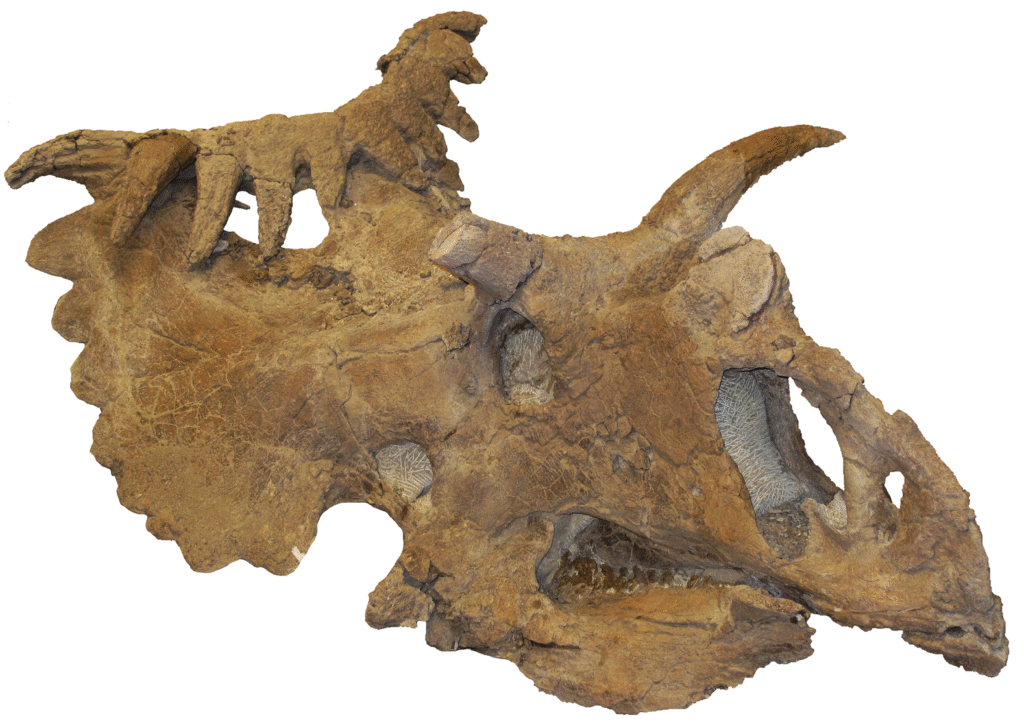
The extraordinary horn configuration of Kosmoceratops has sparked considerable scientific debate regarding its primary function. The most widely accepted theory suggests that the elaborate horn array served primarily as a visual display structure for species recognition and sexual selection, rather than for defense against predators. The forward-curving nature of many of the frill projections would have made them less effective as weapons against large predators like tyrannosaurs. Instead, these ornate structures likely functioned as visual signals to attract mates or establish dominance within the social hierarchy, similar to the elaborate antlers of modern deer or the frills of certain lizards. Supporting this hypothesis is the observation that ceratopsian horn arrangements show significant species-specific variation, suggesting they played a crucial role in identifying potential mates of the same species. However, the possibility remains that the horns served multiple functions, potentially including some defensive capability or thermoregulatory purpose in addition to their display function.
Social Behavior: Herd Life and Interactions
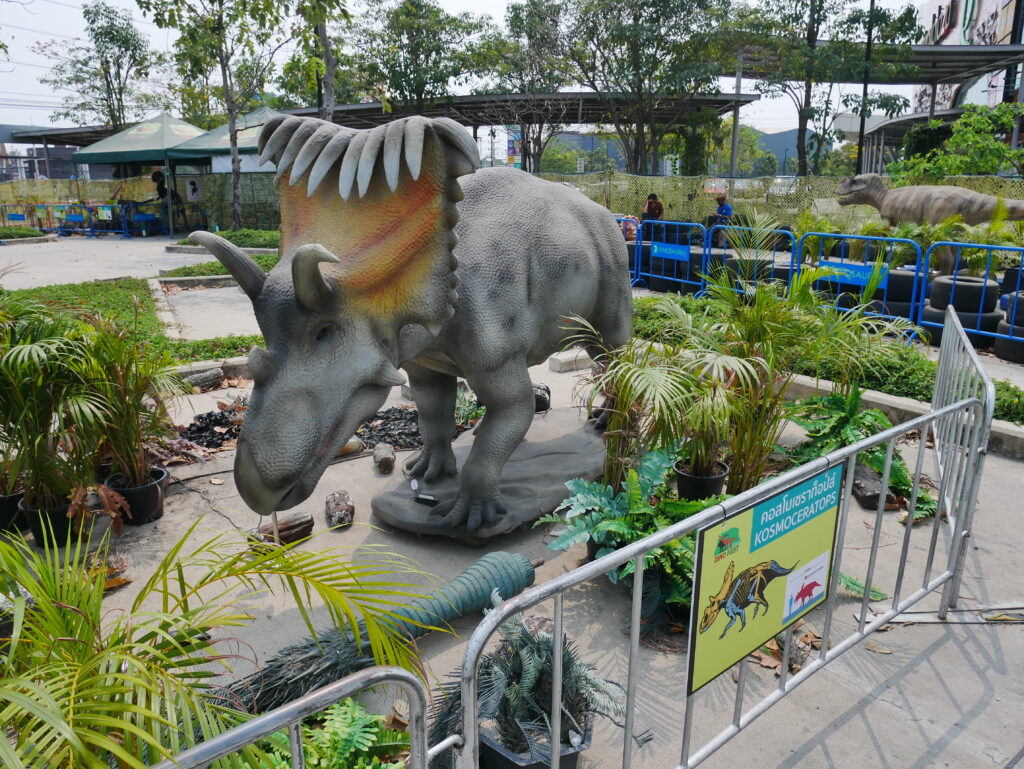
Evidence from multiple ceratopsian dinosaurs, including relatives of Kosmoceratops, suggests these animals likely exhibited complex social behaviors and probably lived in herds of varying sizes. While no direct evidence of herding has been found specifically for Kosmoceratops, the discovery of bone beds containing multiple individuals of related ceratopsians supports the hypothesis that these animals were social. Living in groups would have provided numerous advantages, including enhanced protection against predators and more efficient foraging strategies. The elaborate horn displays of Kosmoceratops likely played important roles in social interactions, potentially helping establish dominance hierarchies within herds or attracting mates during breeding seasons. Some paleontologists theorize that male and female Kosmoceratops may have displayed sexual dimorphism in their horn arrangements, with males possessing more elaborate displays, though conclusive evidence for this hypothesis remains elusive due to the limited number of specimens discovered so far.
Evolutionary Significance: A Ceratopsian Wonder
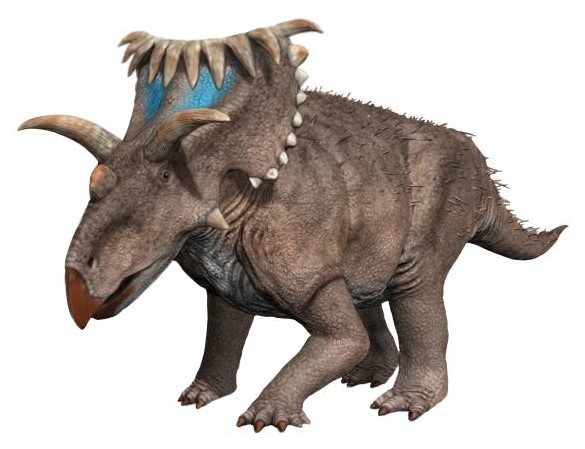
Kosmoceratops represents a fascinating case study in the evolution of ceratopsian dinosaurs, particularly regarding the development of extreme cranial ornamentation. It belongs to the Chasmosaurinae subfamily of ceratopsians, which includes other well-known horned dinosaurs like Triceratops. However, Kosmoceratops displays one of the most derived and elaborate frill structures within this group, suggesting rapid evolutionary development of these features. Particularly intriguing is its close relationship with Vagaceratops, another chasmosaurine with similar but less extreme frill modifications, pointing to an evolutionary radiation of horned dinosaurs in the southern portion of Laramidia. The extreme nature of Kosmoceratops’ ornamentation supports the hypothesis that sexual selection was a powerful driver in ceratopsian evolution, pushing the development of these display structures to remarkable extremes. This pattern mirrors similar evolutionary trends seen in modern animals, where sexual selection leads to the development of exaggerated features, such as the elaborate tail feathers of peacocks or the massive antlers of Irish elk.
Geographical Distribution: The Laramidian Connection
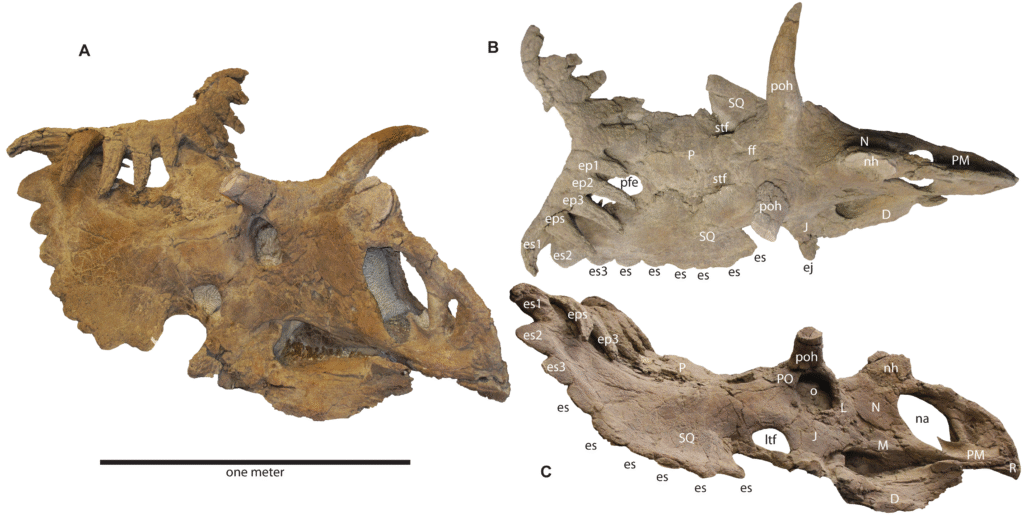
Kosmoceratops fossils have been found exclusively in southern Utah’s Kaiparowits Formation, placing this dinosaur firmly within the southern region of the ancient landmass known as Laramidia. This restricted geographical distribution is particularly significant because it provides evidence for dinosaur provincialism during the Late Cretaceous period. During this time, Laramidia was a narrow, elongated landmass stretching from present-day Alaska to Mexico, and paleontological evidence indicates that distinct dinosaur communities evolved in different latitudinal zones along this landmass. Kosmoceratops appears to have been part of a southern dinosaur province that was distinct from northern communities, with different ceratopsian species dominating different regions. This geographic separation may have been maintained by physical barriers like mountain ranges or rivers, or possibly by climate differences between northern and southern Laramidia. The restricted range of Kosmoceratops contrasts with some other dinosaur groups that show wider distributions, highlighting the complex biogeographical patterns that characterized dinosaur evolution during the Late Cretaceous.
Contemporary Dinosaurs: Kosmoceratops’ Neighbors
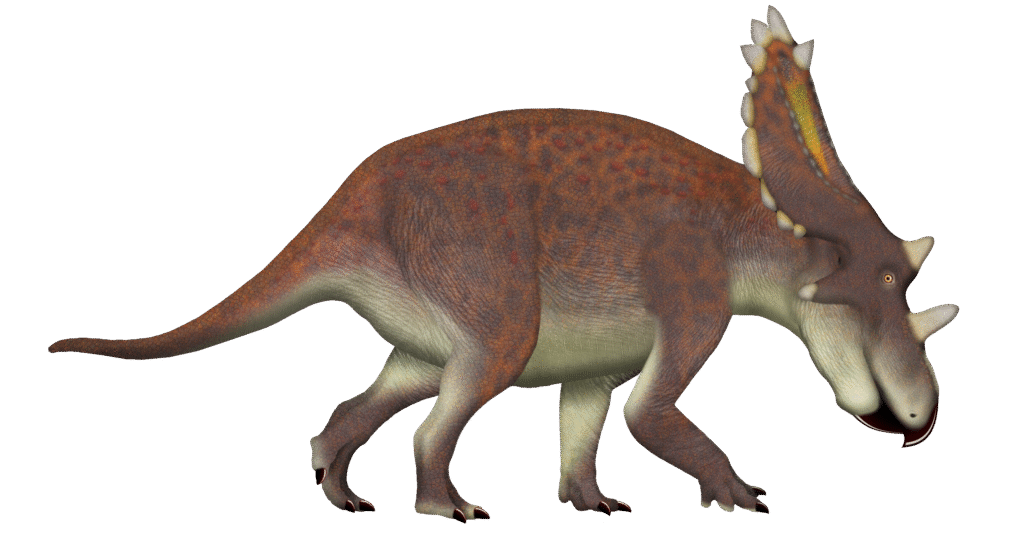
The ecosystem in which Kosmoceratops lived was teeming with a diverse array of other dinosaur species, creating a complex prehistoric community. Among its contemporaries were other ceratopsians, including Utahceratops, which inhabited the same general region but may have occupied a slightly different ecological niche. Large tyrannosaurs, specifically Teratophoneus, were the apex predators of this environment and would have posed a significant threat to Kosmoceratops. The landscape was also home to hadrosaurs (duck-billed dinosaurs) like Gryposaurus, which would have competed with Kosmoceratops for plant resources. Other residents included armored ankylosaurs, swift-moving ornithomimids, and smaller predatory dromaeosaurids. The dinosaur fauna of the Kaiparowits Formation shows a remarkable level of endemism, with many species being unique to this southern region of Laramidia. This rich diversity of dinosaurs coexisting in the same environment suggests a complex ecosystem with various herbivores specializing in different food sources and feeding strategies, allowing multiple large dinosaur species to coexist without excessive competition.
Scientific Importance: What Kosmoceratops Teaches Us
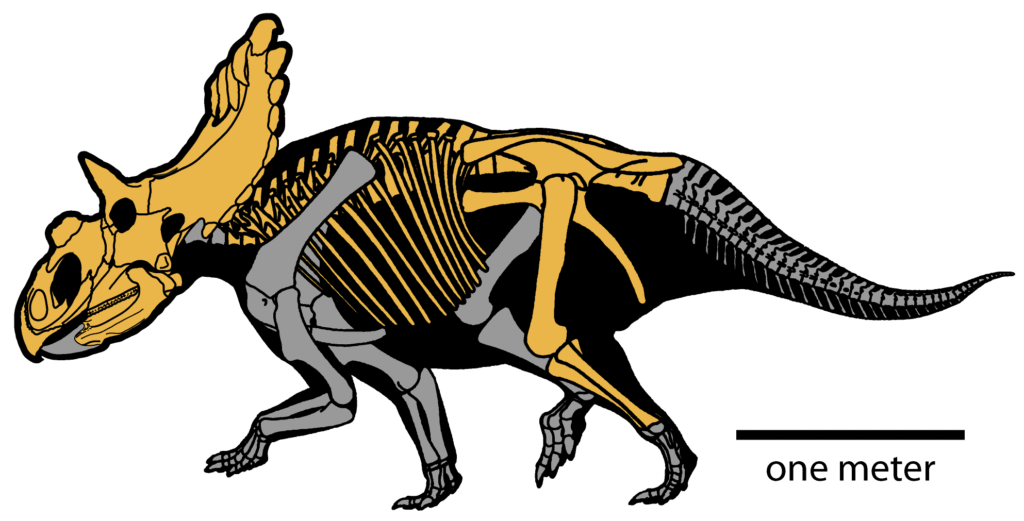
Kosmoceratops has significantly enhanced our understanding of dinosaur evolution, biogeography, and the development of extreme morphological features. The discovery of this spectacularly ornamented dinosaur provides crucial evidence for the hypothesis that sexual selection can drive the evolution of extravagant physical characteristics, much as it does in modern animals. Additionally, the restricted geographical range of Kosmoceratops has helped paleontologists refine models of dinosaur provincialism during the Late Cretaceous, suggesting that distinct dinosaur communities evolved in different regions along the narrow landmass of Laramidia. The exceptional preservation of Kosmoceratops specimens from the Kaiparowits Formation has also provided valuable data on ceratopsian growth patterns, showing how the distinctive horn arrangements developed as individuals matured. Furthermore, the timing of Kosmoceratops’ existence, approximately 76 million years ago, captures an important moment in ceratopsian evolution before the appearance of later forms like Triceratops, helping scientists reconstruct the evolutionary history of this fascinating group of horned dinosaurs.
Discovery Challenges: Unearthing Ancient Treasures
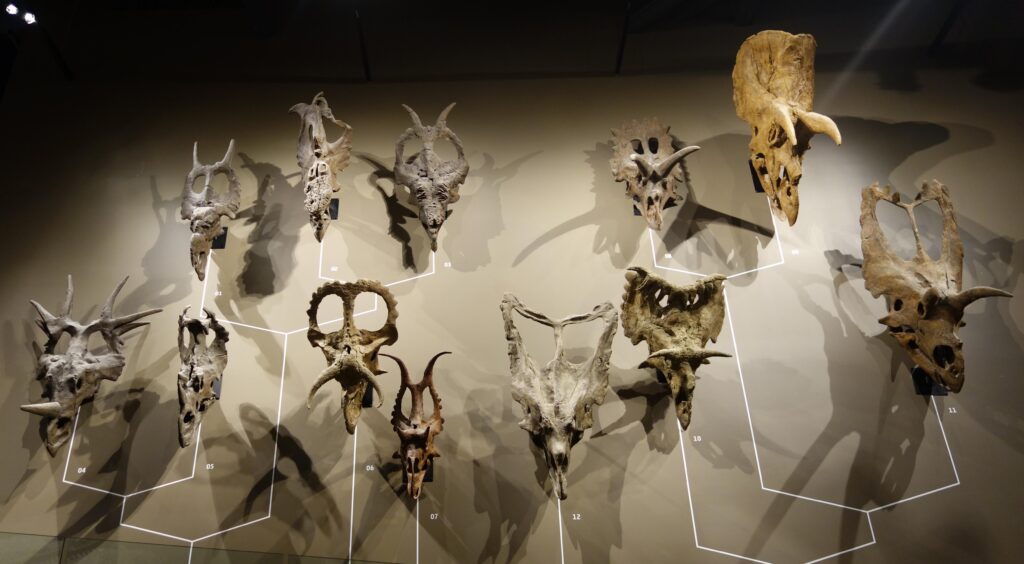
The recovery of Kosmoceratops fossils from Utah’s Grand Staircase-Escalante National Monument presented paleontologists with significant logistical challenges. The remote, rugged terrain of the Kaiparowits Plateau features cliffs, deep canyons, and limited accessibility, requiring expedition teams to employ helicopters for transporting equipment and extracted fossils in some cases. The region’s extreme weather conditions, with scorching summers and freezing winters, further restricted fieldwork to specific seasons. Once discovered, the extraction process for Kosmoceratops specimens involved meticulous work to prevent damage to the delicate horn structures and frill elements that make this dinosaur so distinctive. Paleontologists employed specialized techniques, including the application of hardening solutions to fragile bones and the creation of protective jackets made from burlap and plaster to safely transport specimens to laboratory facilities. The challenging nature of these excavations makes each Kosmoceratops specimen particularly valuable to science, representing not only an important paleontological find but also the culmination of extensive fieldwork under difficult conditions.
Cultural Impact: Kosmoceratops in the Public Eye
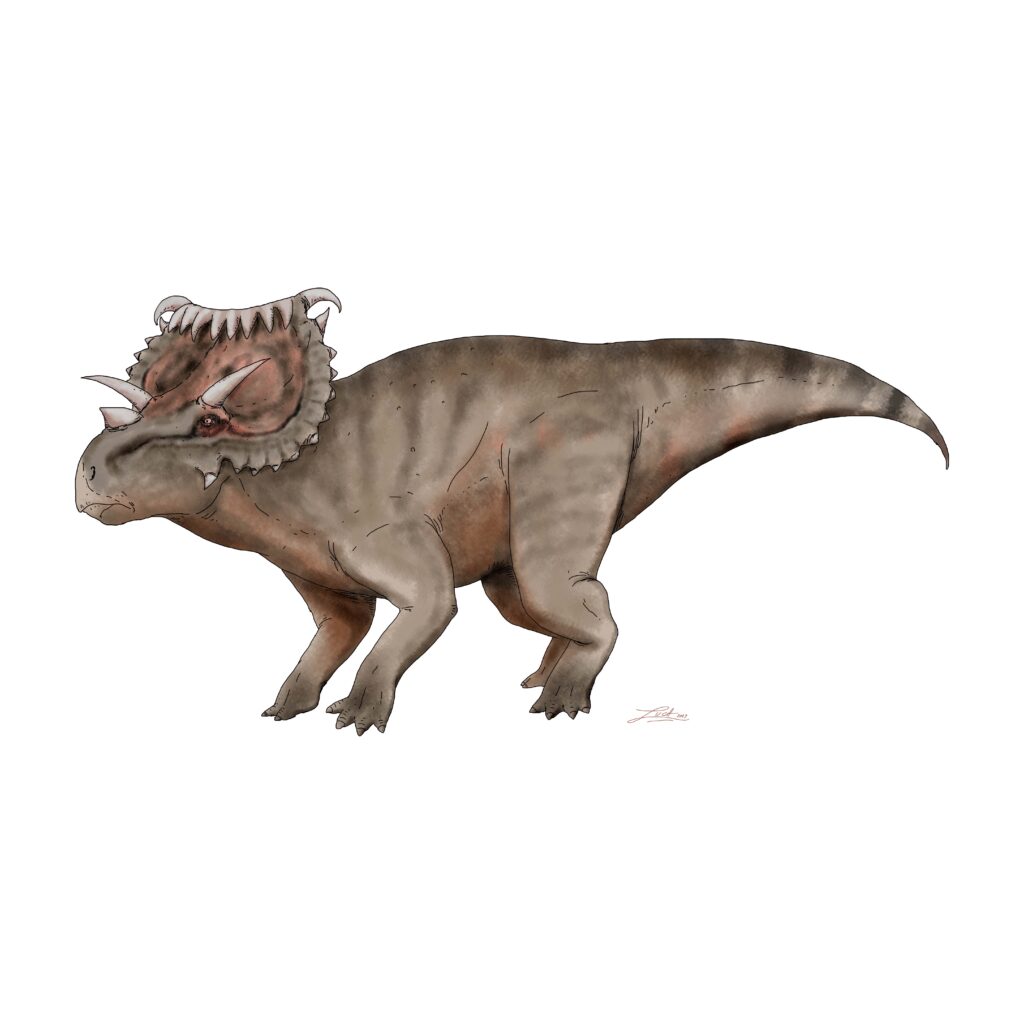
Since its formal description in 2010, Kosmoceratops has captured public imagination and become an ambassador for dinosaur diversity beyond the most famous species. Its distinctive appearance, particularly its record-setting horn count, has made it a favorite subject for paleoartists who recreate prehistoric life in stunning visual detail. Museums across the world, particularly the Natural History Museum of Utah, have featured Kosmoceratops in exhibits highlighting the unique dinosaur fauna of the American Southwest. The dinosaur has appeared in popular books, documentaries, and educational materials, often highlighted as an example of the extreme variety of ceratopsian cranial displays. Kosmoceratops has also become something of a state symbol for Utah, representing the rich paleontological heritage of the region and drawing tourism to fossil-related attractions. Additionally, the discovery story of Kosmoceratops has been used to emphasize the importance of protecting fossil-rich public lands like Grand Staircase-Escalante National Monument, where important scientific discoveries continue to emerge through careful research and preservation efforts.
Conservation of Fossil Sites: Protecting Prehistoric Heritage
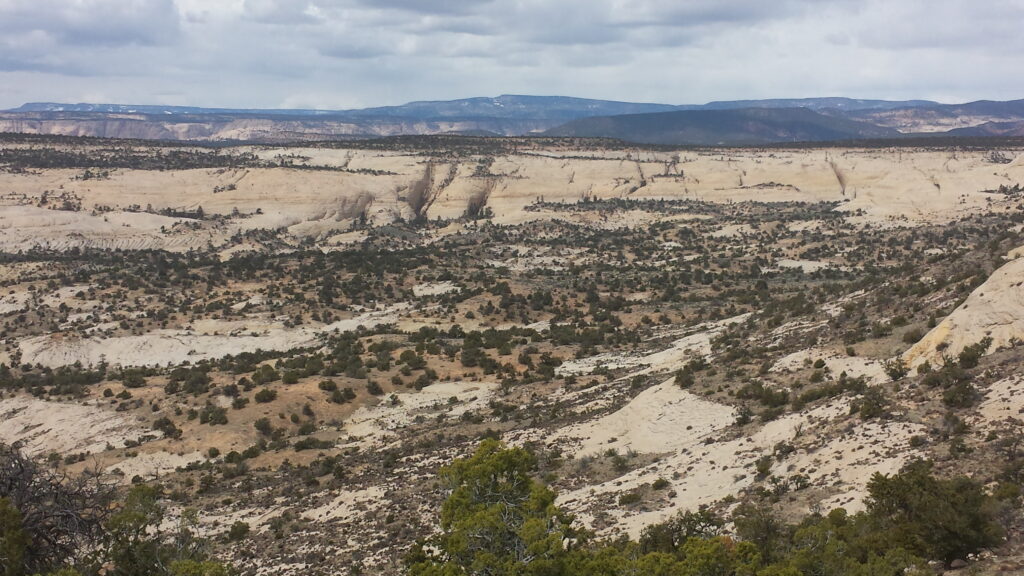
The discovery of exceptional specimens like Kosmoceratops underscores the critical importance of protecting fossil-rich regions such as Grand Staircase-Escalante National Monument. This vast protected area contains one of the most complete and well-preserved late Cretaceous fossil records on Earth, providing an unparalleled window into dinosaur evolution during this crucial period. Conservation efforts focus on balancing scientific research access with protection against unauthorized collection, weathering, and erosion that threaten fossil resources. Federal protections prohibit the collection of vertebrate fossils from public lands without proper permits, ensuring that scientifically significant discoveries enter public museum collections rather than private hands. Ongoing monitoring programs track exposed fossil sites, while educational initiatives teach visitors about the importance of leaving fossils undisturbed and reporting new finds to authorities. The long-term preservation of these fossil beds remains essential not only for discovering potential new Kosmoceratops specimens but also for understanding the broader ecosystem in which this magnificent horned dinosaur lived, providing future generations of scientists with the opportunity to continue unraveling the mysteries of Earth’s prehistoric past.
Conclusion
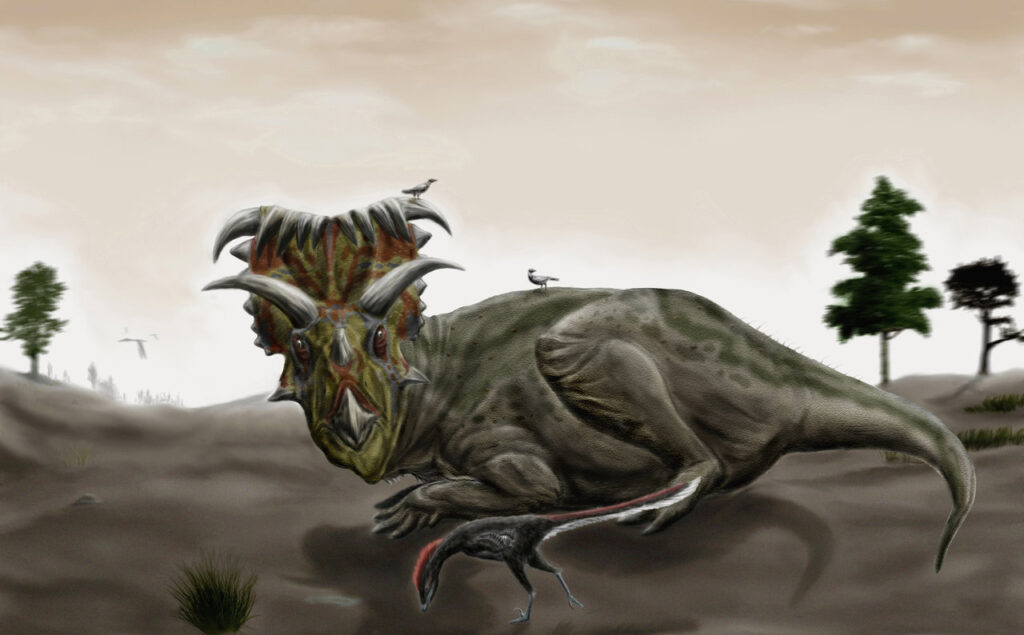
Kosmoceratops stands as a magnificent testament to the wonders of evolution and the incredible diversity of life that existed millions of years before humans walked the Earth. With its unparalleled array of 15 horns adorning its elaborate skull, this dinosaur represents one of nature’s most spectacular experiments in cranial ornamentation. From the rugged landscapes of what is now southern Utah, Kosmoceratops has emerged as both a scientific treasure and a cultural icon, challenging our understanding of dinosaur evolution while capturing public imagination. As paleontologists continue their careful work in the fossil-rich formations of the American Southwest, we can look forward to learning even more about this extraordinary horned dinosaur and the prehistoric world it inhabited—a world where elaborate displays and evolutionary innovation played vital roles in survival, communication, and perhaps even mating rituals. The striking appearance of Kosmoceratops, with its intricate horns and frill, not only highlights the vast morphological diversity among ceratopsians but also invites deeper inquiry into the selective pressures that shaped such features. Each fossil discovery adds another brushstroke to the vivid portrait of life in the Late Cretaceous, reminding us that even in extinction, creatures like Kosmoceratops continue to inspire awe, curiosity, and a profound respect for Earth’s ancient past.


